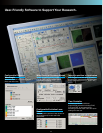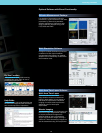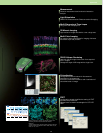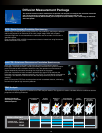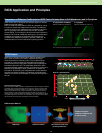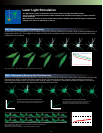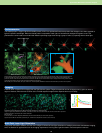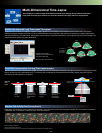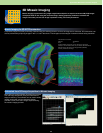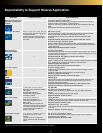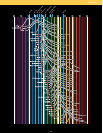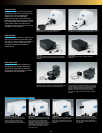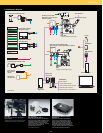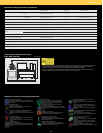
Significantly Improved Long Time-Lapse Throughput
Equipped with motorized XY stage for repeated image acquisition from multiple points scattered across a wide area. The system
efficiently analyzes changes over time of cells in several different areas capturing, large amounts of data during a single experiment to
increase the efficiency of experiments. Microplates can be used to run parallel experiments, which significantly improves throughput for
experiments that require long-term observation.
Focal Plane 1
Focal Plane 2
Focal Plane 3
Focal Plane 4
Point 1
Point 2
Point 3
Point 4
Point 5
Point 6
Multi-Point Time-Lapse Software
The FV1000 can be used for ideal multi-dimensional time-lapse imaging during confocal observation,
using multi-area time-lapse software to control the motorized XY stage and focus compensation.
Multi-Dimensional Time-Lapse
P1
P2
P3
P4
P5
Maintain Cell Activity Over A Long Period
Proprietary CO2 incubator control keeps the environment inside the tissue culture dish completely stable. The environment is precisely
maintained at 37°C with 90% humidity and 5% CO
2 concentration.
ZDC
Baseline focal plane
IR Laser for focal
plane detection
Offset
Scanning
unit
Set target
observation
plane
as offset.
Over time, the
objective focal
plane drifts from
the observation
plane.
Laser detects
the glass
surface before
imaging.
Immediately
returns to initial
offset plane,
for focal drift
compensation.
Objective
focal
plane
Supports repeated image
acquisition from multiple areas in
a single microplate well.
0 s 1000 s 2000 s 3000 s 5000 s 6000 s 7000 s4000 s
Human lymphoblast cells TK6
Courtesy of: Masamitsu Honma, Dir.
Biological Safety Research Center Div. of Genetics and Mutagenesis I, National Institute of Health Sciences
19
Focal Drift Compensation for Long Time-Lapse Imaging
The IX81-ZDC Zero Drift Compensation system corrects loss of focus caused by temperature changes around the microscope and other
factors during long time-lapse observation. The thermal drift compensation eliminates the need to take images at several Z planes,
minimizing live cell exposure to irradiation.



